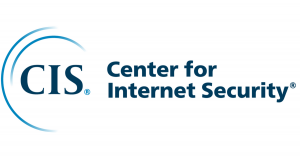The hybrid workplace became ubiquitous in response to the pandemic, and it’s now an ongoing feature of how work is done. But setting up systems that function equally well for remote and in-office workers takes new strategies, approaches and technologies.
During Wednesday’s GovLoop online training session, entitled “How to Support the Hybrid Gov Workforce,” three experts from across the public and private sectors offered their pointers for improving the hybrid experience.
Recognize that things have changed
In a hybrid environment, IT is not only about maintaining an organization’s in-house systems, it’s about trouble-shooting home-based problems. “One of our early challenges was the realization that home Wi-Fi networks are not nearly as robust as we think they are,” noted Duane Schell, Chief Technology Officer for the state of North Dakota.
“They have to learn that this isn’t the local network,” agreed Russell Pavlicek, Cloud Solutions Architect at Red Hat. “Could it be a problem with their local router?”
Use what you’ve got to adjust to new security requirements
To take security remote, said Kimberly K. Watson, Senior Program Advisor for Operations and Security Services at the Center for Internet Security (CIS), “The two most important issues are identities and authorizations. If you’re authenticating on the corporate device, you get different authorizations than if you’re not.”
“If you look at what you’ve already got, you can move the needle really far, really fast,” Schell concurred.
Turn to automation
All three experts recommended automation. “In our organization, any and all defined, repeatable process must be automated,” Schell said.
“We’ve had a culture in IT that was frequently personality-driven,” said Pavlicek. “I’ve got a problem, so I’m going to my number one guy.” But what happens if the number one guy isn’t available?
The answer is to automate essential processes, allowing mid-level staff to initiate them. “If you can put automation in front of [your cloud interface], whether you’re working in the cloud or on-premises, the automation is the same, that same person can push the button.”
Automation also frees staff to do what they’re best at doing. “A lot of organizations have people as the point of integration, and that really needs to be [done by] technology. People need to be the point of decision,” Watson said.
Use the cloud and partnerships to augment what you have
Use partnerships to get the skills your organization needs. “We’re all competing for these high-end skillsets,” Schell said. “That means you’ve got to bring your partners in.”
And keep it simple. “Define your architectural strategies so you don’t have to invest in dozens of different platforms,” he added.
Pavlicek also advised finding a unified answer. “One of the problems we have seen recently is people investing in pieces of problems. But then you have to integrate them.”
A unified solution also helps budgeting for sustainability. “Often the investment in on-premises technology is a one-time investment,” Watson said. “But cloud is a sustained cost. Look at what these offerings are buying you, in productivity or time saved, and keep that money in your budget to sustain what you’re doing.”
This online training brought to you by:


